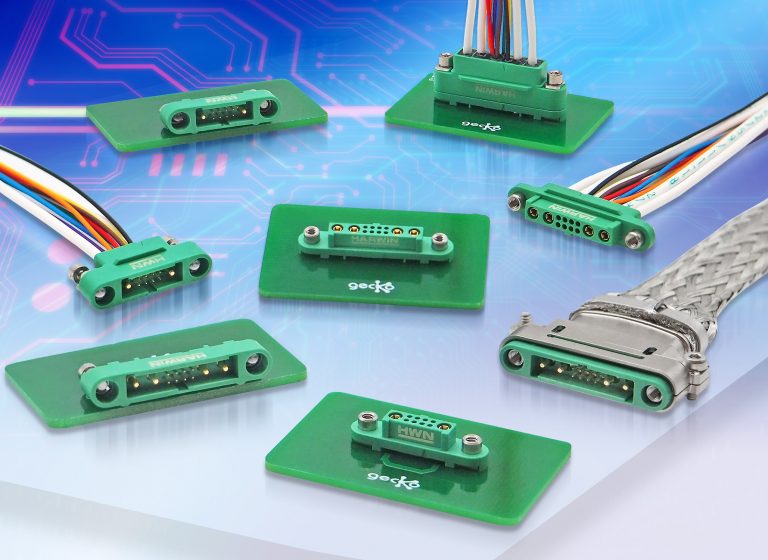What is Mate-Before-Lock?
Definition of Mate-Before-Lock
Mate-before-lock describes the action of mating together a connector pair with jackscrews or similar locking features, but the locking sequence is not started until after the connectors are fully mated.
Download this article in PDF format
What are the advantages of Mate-Before-Lock?
There are several advantages to using a connector that is designed to be Mate-Before-Lock.
- The mating action is much easier, as the locking mechanisms or jackscrews do not interfere with the plug-together part of the sequence.
- This is especially helpful on smaller connectors, where the mating force of the contact pins is reasonably low and easy to mate together.
- The mated connectors will retain together by the contact force, whilst the user then readies the screwdriver or otherwise engages the lock.
Are there any disadvantages to Mate-Before-Lock?
- On a very high pin count, or a very high mating force connector, mate-before lock is not recommended. The action of screwing or “jacking” the connectors together is a better method, as it uses the steady force of the screwing mechanism to draw the two connector halves together, to a fully mated condition.

How can I tell if a jackscrew is Mate-Before-Lock?
You need to look at the connector half that contains the rotating screw, sometimes known as the “floating” jackscrew. If the jackscrew can move forwards or backwards, then it is a good chance that it will be a Mate-Before-Lock screw fixing.
If the jackscrew is fixed and cannot move along its axis, then these screws are not Mate-Before-Lock and connections have to be jacked together.

How do I use Mate-Before-Lock?
The connection method is simple:
- Plug the two connectors together by hand. You will be able to fully mate the two connectors together.
- Using the applicable hex or flat blade screwdriver (depending on the style of the screw head), fully screw down one of the jackscrews or locking screws. Or if it is a side latch, snap the side latch into place.
- Repeat on the other side – engage the screw or latch.
- For screws, once you feel they are fully engaged, you can either hand-tighten them, or use a torque screwdriver to tighten to the manufacturer’s recommended torque. This can normally be found on component specification datasheets or instruction sheets.
- The connectors are now fully mated and secured.
To disengage or un-mate the connectors:
- If the connection method is latches, generally it’s good practice to disengage both of these at the same time. These latch styles often include a small ejection method built in, which will also force the two connectors apart. If you don’t do these at the same time, there’s a slight chance of damage as you are causing an angle on one connector.
- For the screw type, use the applicable screwdriver to fully unscrew one of the jackscrews or locking screws. Repeat on the other side.
- The connectors can now be pulled apart.

How does this compare to normal Jackscrews?
Here’s how the connection method works for jackscrews designed for jacking components together:
- Plug the two connectors together by hand as far as they will go. The end of the floating jackscrew will be pushed against the fixed jackscrew as far as it can.
- Using the applicable hex or flat blade screwdriver (depending on the style of the screw head), and maintaining pressure on the connectors to keep them against one another, turn one jackscrew half a turn. Now turn the second jackscrew half a turn.
- Repeat on both the first jackscrew and the then the second jackscrew, half a turn on each, until the connectors are fully mated and you start to feel resistance on turning the screw.
- Once you feel they are fully engaged, you can either hand-tighten them, or use a torque screwdriver to tighten to the manufacturer’s recommended torque.
Disengaging or un-mating the connectors is the reverse process – turn each jackscrew half a turn, first one side, then the other, until the jackscrews are free of each other. You can then pull the two connectors apart.
Does Harwin have any Mate-Before-Lock connectors?
The range of Gecko-SL and Gecko-MT connectors from Harwin are all Mate-Before-Lock designs. This includes both Standard and Reverse Fix:
- Standard Screw-Lok – floating jackscrews are fitted to female connectors;
- Reverse Fix Screw-Lok – floating jackscrews are fitted to male connectors. Can also be referred to as Reverse Gender.
Datamate Reverse Fixings are also Mate-Before-Lok. This fixing style can be used on J-Tek, Mix-Tek, Power and Coax connectors.
Standard Datamate fixings, and M300 series with screw fixings are not Mate-Before-Lock, and require connectors to be jacked together.
How can we help you?
If you would like to talk to someone about Harwin’s product, technical knowledge or documentation, contact one of our Experts for assistance.
Uh oh, it looks like you are using an outdated browser version.
Some functions may not work as expected on Harwin.com in your current browser. For the best experience, more security and speed, we recommend updating your browser to the latest version.
(if you are using Internet Explorer, we recommend switching to an alternative browser.)
Still having issue? Contact [email protected] for help.



